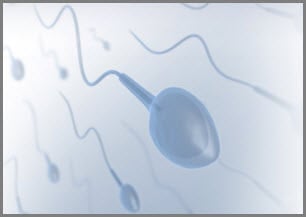Overcoming No Sperm Count: Azoospermia

The complete lack of sperm in the ejaculate, also known as azoospermia, is a condition that affects 1 percent of all men and 10 to 15 percent of infertile men. The cause of azoospermia can be either obstructive or non-obstructive in nature.
Non-obstructive Azoospermia
Non-obstructive azoospermia can result from hormonal abnormalities or other disorders that affect spermatogenesis (the process of developing mature sperm cells). This type of azoospermia can be caused by genetic abnormalities (such as Klinefelter Syndrome or Y chromosome abnormalities), or it may be acquired due to infection, trauma, cancer, or radiation. Men with this form of the condition were considered irreversibly sterile until recently. It is now known that sperm can be present in the testes despite being absent in the ejaculate. Testicular sperm extraction can be used to successfully retrieve sperm for IVF and intracytoplasmic sperm injection (ICSI).
Obstructive Azoospermia
In obstructive azoospermia your sperm production is normal, however, an obstruction prevents the normal transport of sperm through the post-testicular ductal system. Obstructive azoospermia affects 40 percent of patients and it can be caused by abnormalities from birth (such as absence of the vasa deferentia) or acquired blockages (such as after vasectomy). Other causes of obstructive azoospermia include ejaculatory duct obstruction (EDO) that can result from chronic prostatitis, prostatic calcification, and compression of the ducts by cysts in the prostate or seminal vesicle.
Treatment Options - No Sperm Count
In general, there are two treatment strategies for infertile men with obstructive azoospermia: surgical correction of the obstruction, or sperm retrieval from the epididymis or testes coupled with IVF/ICSI and/or cryopreservation. Microsurgical reconstruction is often used for correcting obstructions in the vas deferens or epididymis, while EDOs are treated by transurethral resection of the ejaculatory ducts (TURED). When surgery is not an option, such as in the case of non-obstructive azoospermia or if your partner is also experiencing infertility problems, various methods of sperm retrieval may be employed in conjunction with IVF/ICSI.
If you suffer from azoospermia or low sperm count, it is vital you talk to your doctor about the exact causes of the condition and available treatment options.






